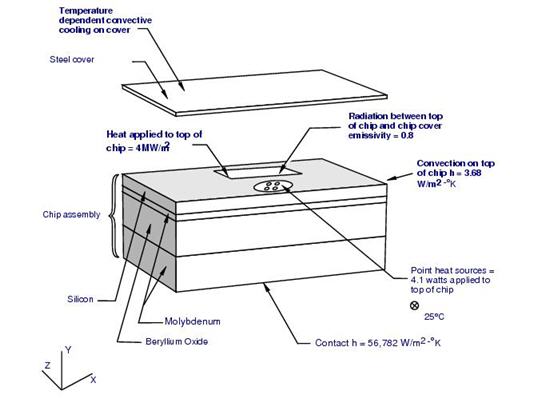XXXXXXXXXXXXXXXXXXXXXXXXXXXXXXXXXXXXXXXXXXXXXXXXXXXXXXXXXXXXXXXXXXXXXXXXXXXXXXXXXXXXXXXXXXXXXXXXXXXXXXXXXXXXXXXXXXXXXXXXXXXXXXXXXXXXXXXXXXXXXXXXXXXXXXXX''"> Example Problem Number 10--Translate MSC.Patran Thermal Input to SINDA Input
Introduction
Example problem 10 has been designed to illustrate the translation of input prepared for a Patran Thermal analysis to a format for input to SINDA. The necessary input files can be retrieved with the GET_QTRAN command. The problem is a simple electronic chip made up of multiple materials with convection, radiation and temperature boundary conditions. Both nodal and surface flux heat source are applied to the chip. All of this problem translates to a SINDA input file even though not all functionality of Patran Thermal cannot be translated to SINDA. For example, even though the entire radiosity network is carried into the SINDA input definition, if variable emissivities are modeled, SINDA does not properly calculate the radiation. The supporting routines necessary to handle this case have not been developed at this time. If variable emissivities are modeled, an error message is generated and the remaining portion of the problem is translated to SINDA input. The Patran Thermal convection library is another feature that has not been developed for execution with SINDA.
Key Concept
The SINDA translation option takes the input files as generated by Patran Thermal and creates the input in a format ready to be executed by SINDA codes whose input formats are compatible with Network Analysis' version or the SINDA85 code. Create the inputs for this demonstration problem and execute Patran Thermal with the iterative solver, the direct solver and the SINDA code. Because the inputs are the same does not mean that all solutions will yield the same results. Methods of solution also contribute to variations in results.
Figure D‑10 Example Problem 10 - MSC Pastran Thermal Input to SINDA Input

